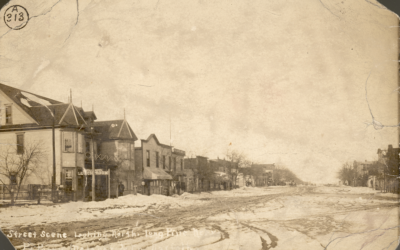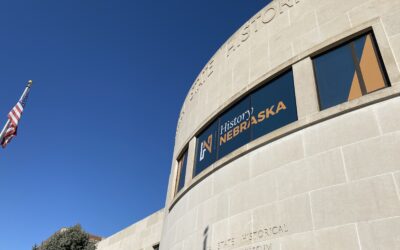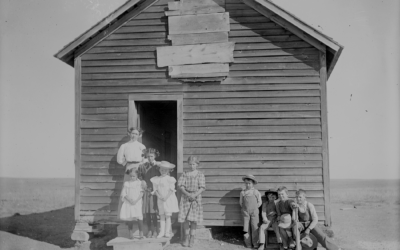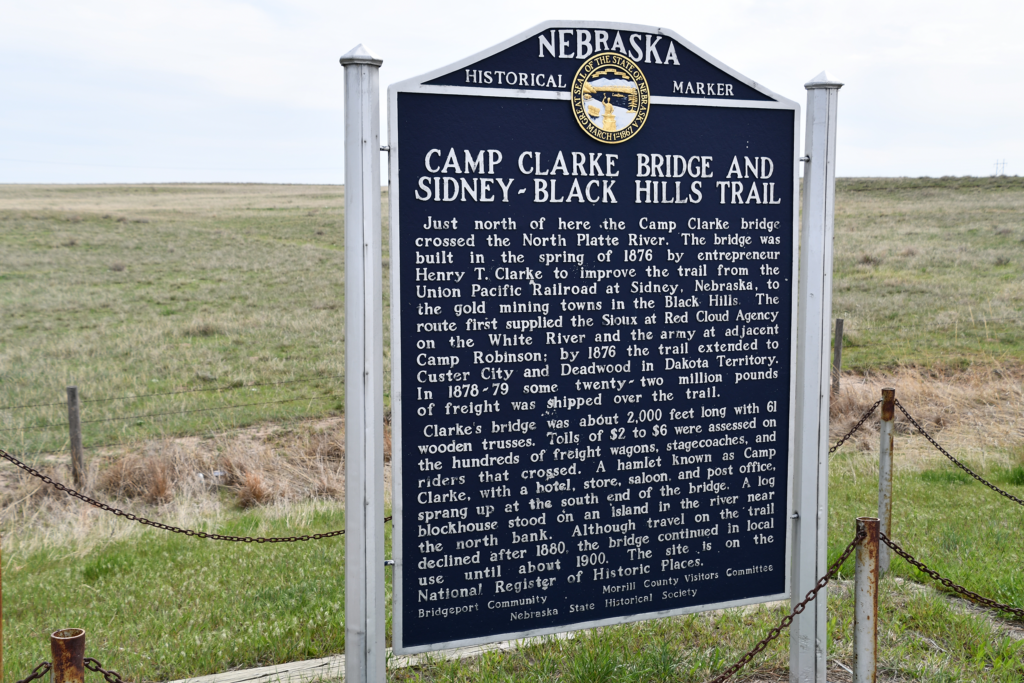
Marker Text
Just north of here the Camp Clarke bridge crossed the North Platte River. The bridge was built in the spring of 1876 by entrepreneur Henry T. Clarke to improve the trail from the Union Pacific Railroad at Sidney, Nebraska, to the gold mining towns in the Black Hills. The route first supplied the Sioux at Red Cloud Agency on the White River and the army at adjacent Camp Robinson; by 1876 the trail extended to Custer City and Deadwood in Dakota Territory. In 1878- 79 some twenty-two million pounds of freight was shipped over the trail.
Clarke’s bridge was about 2,000 feet long with 61 wooden trusses. Tolls of $2 to $6 were assessed on the hundreds of freight wagons, stagecoaches, and riders that crossed. A hamlet known as Camp Clarke, with a hotel, store, saloon, and post office, sprang up at the south end of the bridge. A log blockhouse stood on an island in the river near the north bank. Although travel on the trail declined after 1880, the bridge continued in local use until about 1900. The site is on the National Register of Historic Places.
Location
U.S. 26, 3 miles west of Bridgeport. View the marker’s location HERE.
Additional Images
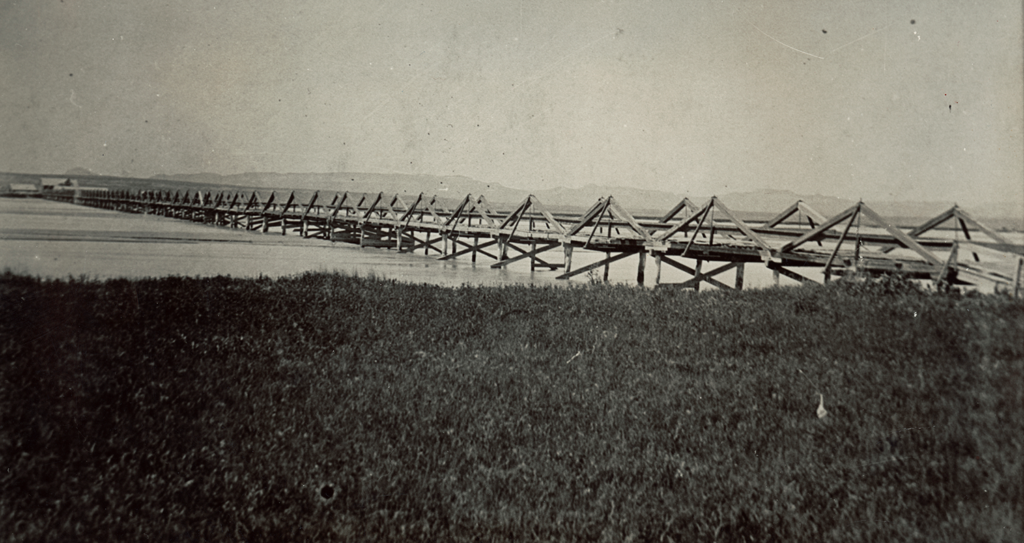
Camp Clarke Bridge, looking south toward the Wild Cat Range. RG3289 24-a


